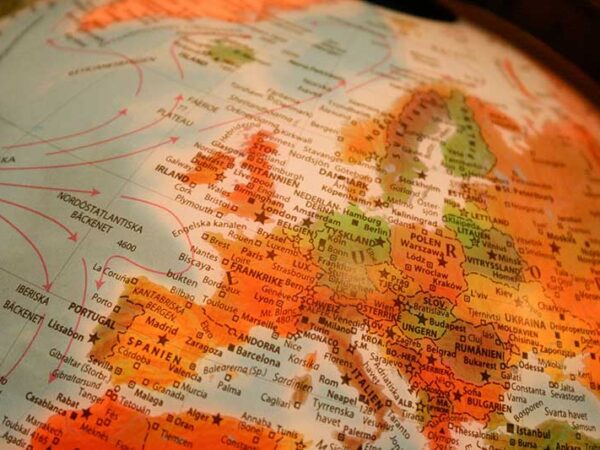Drawing up a list of the biggest and busiest airports in the European Union, it should hardly come as a surprise that the major airports are located in (or near to) the major European cities. But was the airport built near a large city, as this is where the customer base is located or made the demands of the city’s population demand that an airport was a necessity? Whatever the answer, throughout the European Union, the biggest, busiest airports lie within a short distance of a large metropolis with very few exceptions to the rule.
London, England
Serving the sprawling city of London and its suburbs, Heathrow Airport is one of the world’s top three busiest airports in terms of number of flights and passengers carried annually. A hub for British Airways, there are approximately ninety international airlines using Heathrow regularly. The airport hit a record of almost 81 million passengers in 2019 before the coronavirus pandemic decimated air travel.
First opened in 1929, Heathrow has expanded over the decades, and there are now five terminals at the airport, with the fifth opened in 2008 and a cargo terminal. The airport is located 15 miles (24 km) from the heart of London but is readily accessible by train as there are three rail stations at Heathrow. Slower, but equally effective, is a direct link to Heathrow Terminal 5 on the London Underground ( the Tube).
Alternatively, there are also good road links to the airport if travelling by car, bus or taxi, although a taxicab ride can be expensive.
The airport covers over 12 square km and takes its name from the village of Heath Row, which once occupied the area on which Terminal 3 now stands. The designated code for London Heathrow is LHR.
Amsterdam, Holland
Roughly 14 miles (22 km) southwest of Amsterdam lies the iconic Schiphol Airport. The airport opened for business in 1916 and has undergone several major overhauls in its more than 100-year history. Exclusively a military airfield until the end of the First World War, Schiphol then became a civilian airport and the main airport for Holland.
Although Schiphol was severely damaged during the German occupation of World War II, it was rebuilt from the ground up immediately following the end of the war.
Despite handling an average of 60 million passengers a year and hosting around a hundred airlines, Schiphol operates smoothly and efficiently from just four terminal buildings and three departure lounges, making it a role model for many modern airports. Schiphol is dispersed across 28 square kilometres and has the airport designation code AMS.
Madrid, Spain
Named after politician Adolfo Suárez, Spain’s biggest airport is also the fourth largest in Europe. The Adolfo Suárez Madrid-Barajas Airport covers an impressive 24 square kilometres and caters to more than eighty different airlines in its four terminal buildings and on its four runways.
First opened in 1928, Adolfo Suárez airport is located just 2 miles (3 km) from the centre of Madrid and is well serviced by train, bus, taxi and shuttles. The airport is busy throughout the year as it caters to more than 49 million passengers, with the highest numbers passing through Madrid airport in the summer months of June to September.
The Adolfo Suárez Madrid-Barajas Airport carries the IATA (International Air Transport Association) designated code of MAD.
Paris, France
Several airports lie close to Paris, but the most important is Charles de Gaulle Airport, one of the world’s busiest passenger numbers. Named in honour of former president Charles de Gaulle, the airport is approximately 16 miles (25 km) from the heart of Paris and is a fairly modern facility, having only opened in 1974.
Charles de Gaulle Airport is an important hub for America’s Delta Air Lines and operates flights for around a hundred other airlines. The airport is particularly popular with budget airline companies and operates domestic and international flights from just three terminals. Terminal One is where many flights to countries within the Schengen Area depart, while Terminal Three is home to many budget airlines and caters to charter flights.
The airport is massive, covering some 33 square kilometres, and bears the IATA designation code CDG.
Frankfurt, Germany
It might be surprising, but Germany’s busiest airport is not in Munich or Berlin but in Frankfurt. Located 8 miles (12 km) southwest of the city, Frankfurt Airport is the main hub for Germany’s national carrier Lufthansa.
Although Frankfurt Airport has only two terminals (a third is due to open in 2023), it caters to almost 65 million passengers annually, placing it just behind Heathrow, Charles de Gaulle and Schiphol. Germany’s biggest airport covering 23 square kilometres, part of Frankfurt Airport, was an American Air Force base from the end of the Second World War until 2005, when airport authorities acquired the property and is now the site of the new Terminal Three building.
Frankfurt Airport has been in existence since 1936 and has the IATA code FRA.
Rome, Italy
Usually featured in the Top Ten of Europe’s busiest airports is Leonardo da Vinci-Fiumicino Airport outside Rome, Italy. Located near the town of Fiumicino, approximately 21 miles (34 km) from Rome, the airport occupies 16 square kilometres, making it fairly small by international standards. However, Rome’s major airport won the 2022 “Best Airport” award from the Airports Council International for the third year in a row.
Serving more than 40 million passengers a year with flights to over 230 destinations in sixty countries, Leonardo da Vinci Airport was once a hub of operations for the now defunct Alitalia Airlines but continues to be successful since its official opening in 1961 despite the loss of the national flag bearer’s business.
There is a non-stop train from the Leonardo da Vinci Airport to central Rome’s Roma Termini station, with local trains providing links to other towns in the region.
Leonardo de Vinci Airport is designated FCO by IATA.
Lisbon, Portugal
Carrying more than 31 million passengers annually, Humberto Delgado Airport is, by some distance, the busiest airport in Portugal. Most commonly referred to simply as Lisbon Airport, it is the main gateway to Portugal and an important hub for flights to and from Brazil, South America, and Africa.
Portuguese flag carrier – TAP Air Portugal – is a key airline at the airport, but it is also used extensively by many of the world’s biggest airlines and a multitude of budget airlines, including Easy Jet and Ryanair. Despite a high volume of passenger turnover, Lisbon Airport has often been criticised for being congested. There has been talk of building a new airport for decades.
Located just a few miles outside the city of Lisbon, the airport is easily and quickly reached by car or on the direct Metro (subway) line. Humberto Delgado Airport bears the IATA code LIS.
Vienna, Austria
Just 11 miles (18 km) southeast of the capital city lies Vienna International Airport, the country’s biggest and busiest airport. Many of the major European airlines operate out of Vienna Airport, as do several intercontinental companies, but only Austria Airlines runs flights to North America.
Originally a military air base, when first opened in 1938, Vienna Airport was commandeered by occupying British forces in 1945 and renamed RAF Schwechat. Today, the airport remains relatively small, with its four terminals housed in one building. Despite its small size, Vienna Airport is efficiently run and caters to around 30,000 passengers per year.
Vienna International Airport is well served by trains, buses, shuttles, and taxis, as well as the S7 S-Bahn, which runs to Vienna’s city centre. Vienna Airport has the IATA designation code VIE.
Stockholm, Sweden
Sweden’s most important airport is Stockholm-Arlanda Airport, located 23 miles (37 km) north of Stockholm’s capital city. The airport was originally used purely for practice flights when it opened in 1959 and wasn’t officially opened until 1962.
From day one, Stockholm Airport was used for intercontinental flights as it possessed Sweden’s only suitable runways at the time. Today, the airport is a hub for Nordic Airlines and operates domestic and international flights, handling an average of 26 million passengers annually.
Despite its distance from the centre of Stockholm, the airport is easily reached via the Arlanda Express train, which operates a service every fifteen minutes.
Stockholm Airport has four terminal buildings (although only three are currently in use), and the airport bears the IATA code ARN.
EU Airport Changes
Changes are happening in European air travel, and new rules and regulations are coming into effect in the coming years. The European Union is currently rolling out the European Travel Information and Authorisation System (ETIAS), and this will soon be a mandatory requirement for non-EU passport holders using any European Union airport.
EU citizens can and will be allowed to fly to and between EU member states with an ordinary passport, but nationals of countries outside the EU will need to have applied for (and received) ETIAS approval before any journey can be undertaken.
The ETIAS requirement will also apply to visitors wishing to enter a Schengen Area member state, but many of these foreign visitors may also require a Schengen Visa before being allowed to enter the Schengen Area. Whether an ETIAS alone will suffice or a Schengen Visa is also required will depend on the nationality of the arriving visitors and whether or not their home country currently enjoys visa-free access to Europe or a visa to visit is required.




